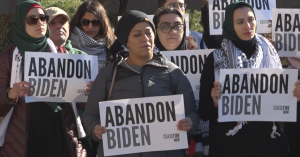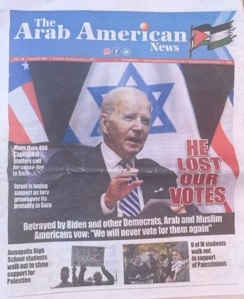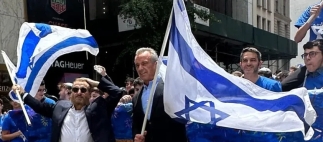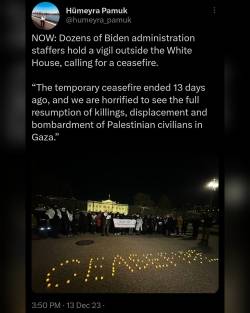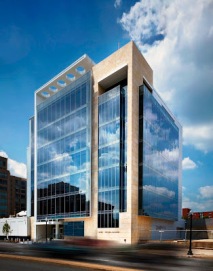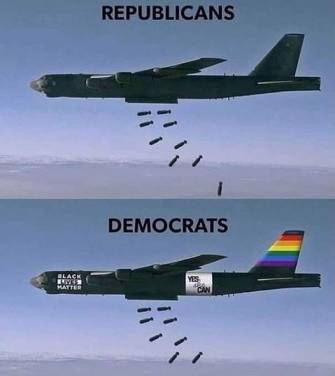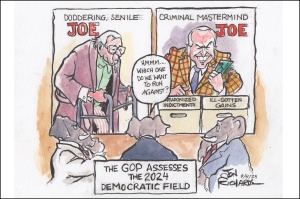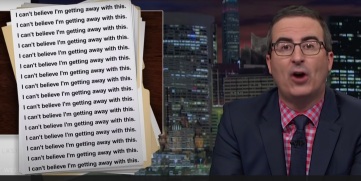Part Twenty
Pay no attention to that genocide right in front of your face – Caitlin Johnstone
We mention “Super Tuesday” not for the predictable sweeps by Biden and Trumpus, but for the fact that over 200,000 people cast “uncommitted” or similar votes, including nearly 20% of the vote in Minnesota, 29% in Hawaii and 12% in North Carolina. Getting re-elected was already looking difficult well before the Gaza war began, but now, writes Jeet Heer,
…the Biden reelection campaign has developed an elaborate system of denial to wave away bad news…Ironically, with the growing movement of “uncommitted” voters, the Democrats who are angriest at Biden are trying to save the president from his worst instincts of overconfidence and smugness…“Uncommitted” suggests a feckless unwillingness to make a choice. But “uncommitted” voters are super committed.
In a nation where only 20% of news consumers will read past the headline and the media routinely resort to false equivalences, a new poll reveals that half of Americans have no idea whether more Israelis or Palestinians have died. However, while propaganda may keep people ignorant, they are not inherently stupid or morally obtuse. Fifty-five percent now disapprove of Israel’s actions.
The State of the Union address took the usual Democratic tactic of bragging about mild domestic policy initiatives, while almost completely ignoring the incomprehensively wasteful and expensive foreign policy. As Margaret Kimberley wrote,
The State of the Union address exemplifies everything that is wrong with this country. Trivialities are spun as being important, the most serious issues are glossed over, and lies are said to be true.
How does this Democratic government – and its Republican predecessors, to be sure – continue to spend trillions on war without raising taxes? By borrowing the money from the mega-rich and from other countries, and, in a subtle version of the sacrifice of the children, by punting the consequences onto future taxpayers. The national debt is rising by $1 trillion about every 100 days.
The speech provided no subsequent ratings bump, despite Robert Reich’s favorable (“feisty, bold, energetic, and upbeat”) assessment, with its deeply ironic title: “The case for nauseous optimism”. You can’t make this shit up.
Biden’s popularity dropped to a new low, as he trailed Trumpus (48% to 43% among registered voters) at the beginning of March and over 60% doubted his mental capability. Ironically, it says much about the actual “state” of things that while his most vulnerable political weak point is the fact that he’s sponsoring a genocide, Republicans can’t attack him on that point because they agree. Except for Trumpus, of course, who briefly interrupted his immigration fear-mongering and judge-insulting to endorse Bibles for sale and claim that Israel must “finish the problem…never would have happened if I was president” and “Any Jewish person that votes for Democrats hates their religion”, while Jared Kushner gushed over the valuable potential of Gaza’s “waterfront property”. Newsweek contrasted all this to prove that Biden is the adult in the room. Indeed.
Doubting the cognitive capability of either of these geezers is an old sport. What’s new, and – let’s face it, this is good news – millions are doubting Biden’s moral capability. Disapproval of his handling of the Gaza genocide is at 60%, up eight points since December. Undaunted, Biden continued to double down, vetoing yet another UN resolution that would have condemned Israel for the flour massacre. The U.S. has sent Israel over 100 separate arms shipments over the past 150 days – that’s two shipments every three days – and you almost certainly didn’t know that. The government has been able to avoid reporting the sales publicly because they fall under certain value thresholds that would require it to notify Congress.
Liberals who consume the usual media believed they saw something else: a compassionate, caring government policy! Biden was “privately” upset with Netanyahu! Kamala Harris made a wimpy call for a ceasefire. Eight Senators called for an end to arms sales – unless Israel immediately stops impeding aid deliveries.
Then Chuck Schumer, one of AIPAC’s favorite beneficiaries, gave a speech that would have been universally condemned had it been given by Putin, but which was utterly characteristic of American arrogance. He called for new elections in Israel with the express purpose of replacing Netanyahu. Liberals saw puff pieces such as Alternet’s “The anguished courage of Chuck Schumer”, which couldn’t imagine that his “independent” speech had been well-vetted by the foreign policy establishment. They also saw MSNBC hiring former RNC Chair Ronna McDaniel, who had previously attempted to overturn Biden’s victory (she was quickly fired, by NBC still pays retired generals and admirals with personal stakes in what they “analyze”).
Conservatives saw the Wall Street Journal, in a defining statement of American innocence, expressing shock – shock! – that Schumer would engage in such “unwelcome interference” in a democracy! Residents of the dozens of countries that the U.S. has overthrown – as well as two million second-class Israeli Arab citizens – may have had a good laugh.
Schumer’s apparent message was that Democrats’ support for Israel is no longer unconditional, although even Time Magazine could see that “getting rid of Netanyahu” wouldn’t change Israel’s genocidal strategies. Schumer’s actual message was that the Dems are finally taking the polls seriously.
This bloviation was followed by talk of the “Biden-Netanyahu rift” and tiny air drops of food that were  nothing more than “humanitarian aid theater” and hollow talk of building a pier for ship deliveries, as if the U.S. couldn’t simply allow thousands of truckloads into Gaza if it really wanted to. “In reality”, wrote Aaron Maté, “the emergency project underscores Biden’s real priority: to prolong Israel’s rampage in Gaza, the US is even willing to deploy its own military for face-saving public relations stunts”. Sure enough, the U.S. soon proposed a bogus Security Council resolution which conditioned a ceasefire to “immediate” release of all “remaining hostages”. China and Russia vetoed it, with the Russian envoy claiming that the resolution would “ensure the impunity of Israel, whose crimes are not even assessed in the draft.” Then Biden signed the $1.2 trillion Budget Bill, the great majority of it being $895 billion for the War Department, with nothing for UNRW.
nothing more than “humanitarian aid theater” and hollow talk of building a pier for ship deliveries, as if the U.S. couldn’t simply allow thousands of truckloads into Gaza if it really wanted to. “In reality”, wrote Aaron Maté, “the emergency project underscores Biden’s real priority: to prolong Israel’s rampage in Gaza, the US is even willing to deploy its own military for face-saving public relations stunts”. Sure enough, the U.S. soon proposed a bogus Security Council resolution which conditioned a ceasefire to “immediate” release of all “remaining hostages”. China and Russia vetoed it, with the Russian envoy claiming that the resolution would “ensure the impunity of Israel, whose crimes are not even assessed in the draft.” Then Biden signed the $1.2 trillion Budget Bill, the great majority of it being $895 billion for the War Department, with nothing for UNRW.
It’s the season of crazy. The U.S., which had vetoed multiple UN ceasefire resolutions, put forward a fake “ceasefire” resolution that didn’t actually demand a ceasefire and accused Russia and China of “sabotaging” peace when they vetoed it. When an actual ceasefire resolution was passed, the U.S. abstained from voting on it, and then declared that the resolution that did pass is “non-binding”. On 3/25, the State Department quadrupled down, as a spokesman told the press: We have not found them (the Israelis) to be in violation of international humanitarian law…”
American politics is about nothing but fear: fear of Trumpus, fear of the “socialist” Biden. Naming his candidate for Vice President, RFK Jr (who still has not received Secret Service protection, and who still hasn’t veered from his pro-Israel stance) provoked the usual “conspiracy theorist” descriptions from liberals and genocide-avoidant progressives who worry that he will syphon votes away from Biden. 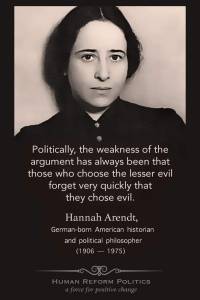 If they bothered to read the polls, however, they’d realize that he’ll take just as many votes from Trumpus. And he will bring progressives out to vote – not for lesser-evil Biden, but for pro-abortion rights congressional candidates, who will suffer if these folks stay home.
If they bothered to read the polls, however, they’d realize that he’ll take just as many votes from Trumpus. And he will bring progressives out to vote – not for lesser-evil Biden, but for pro-abortion rights congressional candidates, who will suffer if these folks stay home.
Schumer’s call for new Israeli elections raises a fascinating question that I proposed in Part Fifteen of this series: Is Israel merely a puppet and regional enforcer of the U.S. empire, or does the tail wag the dog through funding, lobbying and outright blackmail? Johnstone identifies the new strategy: trying to lay all the blame for Gaza on Netanyahu:
By trying to make this mass atrocity solely the fault of Netanyahu and not the…institutions which made it possible, they’re working to ensure that no changes will need to be made to any of those institutions…The western empire has chosen a single scapegoat to carry away its sins so the status quo can march on unhindered by guilt or consequence.
If Bibi takes a well-deserved fall, we will see the recurrence of an old pattern in American myth-making, as I wrote in Chapter Eight of my book:
Around 1985, the “Other” became more personal when television identified many charismatic Third World villains. After the first generation (Ho Chi Minh and Fidel Castro) came Moammar Khaddaffi, Idi Amin, Yasser Arafat, Ayatollah Khomeini, Manuel Noriega, Kim Il Sung, Slobodan Milosevic, Hugo Chavez, Saddam Hussein, Osama Bin Laden and…Mahmoud Ahmadinejad, who was too good to be true: a Holocaust denier who sought to possess nuclear weapons.
Note three themes here. First, U.S. propaganda attacks were often timed to impact (or obscure) domestic issues. Second, only Milosevic was white (but Slavic). Third, several of these men had previously worked for the U.S. Back in 1932, Roosevelt had said of Nicaragua’s Anastacio Somoza, “He’s an S.O.B., but he’s our S.O.B.!” It is as if the U.S. keeps them on ice, allowing them to quietly do their work until it needs to reveal them as the Devil’s latest incarnation. Then they become expendable…
In Part Sixteen of this series I quoted from Pete Seeger’s anti-war song, Waist Deep in the Big Muddy. Older readers will remember the reference to the collapse of Lyndon Johnson’s “Great Society” social programs due to the public’s disgust with that earlier genocide. Johnson chose not to run for re-election, and of course many are still hoping that Biden will make a similar decision. May it be so, but we also need to see how the mythic issues of 1968 (Joe Biden entered the Senate only four years later) are still relevant, at least for the younger voters and voters of color who, four years ago, propelled Biden into the presidency. As I wrote in Chapter Eleven of the book:
Millions marched against the war, not merely because it was a mistake (as apologists still contend), but because it was mad, imperialist genocide. Their parents, the generation that had survived the Depression, saved Europe from the Nazis and consumed the myth of innocent intentions could only respond with, “My country – right or wrong!” The youth, however, who always see the mythic issues quite clearly, chanted: “Hey, hey, LBJ! How many kids did you kill today?”
…Many commentators insisted that the source of the generation gap was the Oedipus complex. Certainly, there was rage against authority. But if young people dreamed of patricide, it was directed against Kronos’ insatiable appetite for his own children, and it was driven by a sense of betrayal. After all, hadn’t oracles warned Ouranos, Kronos and even Zeus that their children would overthrow them? Isn’t that fear at the root of the patriarch’s reign of terror? Two myths intersected in the 1960s. The universal dream of the hero’s journey collided with a nightmare, the refusal to anoint the new kings and queens of the world. Youths demanded initiation and meaning, while elders stiffened and offered the false choice of either stultifying conformity or literal sacrifice.
The dominant myths of a culture transform very slowly. Has anything changed in the American psyche, which D.H. Lawrence described a hundred years ago as “…hard, isolate, stoic, and a killer”? Johnson’s refusal to stop a genocide gave us a Nixon presidency.
On March 29th, Biden acknowledged “the pain being felt” by Arab Americans. The next day, Reuters reported that the U.S. had just quietly authorized yet another “transfer of billions of dollars worth of bombs to Israel”, with over 500 MK82 500-pound bombs and 1,800 MK84 2,000-pound bombs. The Mark 84 produces a crater 50 feet wide and 36 ft deep. It can penetrate up to 11 ft of concrete and causes lethal fragmentation to a radius of 400 yards. When used against urban populations it is a tool of genocide. Even the WAPO admitted:
The 2,000-pound bombs, capable of leveling city blocks and leaving craters in the earth 40 feet across and larger, are almost never used anymore by Western militaries in densely populated locations due to the risk of civilian casualties.
The arms sale will also include 25 F-35 fighter jets. Israel has not lost any jets over Gaza, so these planes are not replacements but augmentation of existing stock, which will likely be used in a war against Iran. The only way to justify attacking Iran will be, in the old mythic manner, to fabricate a false-flag event.
Days later, after the Israelis murdered several World Central Kitchen food distribution workers (who had given the Israelis – and hence the Americans – their exact coordinates), Blinken announced:
The victims of yesterday’s strike join a record number of humanitarian workers who have been killed…They have to be protected. We shouldn’t have a situation where people who are simply trying to help their fellow human beings are themselves at grave risk.
Antony Blinken, your Secretary of State, is a psychopath who will lie to your face just for the fun of it.
We survived Nixon, who left us a recharged reactionary movement. This time around, with the stakes arguably much higher than during Watergate, Biden’s parting gift to America, writes Chris Hedges, “will be Christian Fascism”.
Read Part Twenty-One here soon.

